It looks like you're using an Ad Blocker.
Please white-list or disable AboveTopSecret.com in your ad-blocking tool.
Thank you.
Some features of ATS will be disabled while you continue to use an ad-blocker.
share:
I changed my mind and thought to host next years Volcano watch thread anyway.. i mean why break a new ats tradition ..
SO without much stress and slightly earlier then this years thread , here she is .. to continue learning and discovering volcano`S at their best and worst .. remember you probably found it here first before the major news networks . we watch and monitor 247 from around the world . enjoy it ..
www.abovetopsecret.com...(2013)
www.abovetopsecret.com...(2012)
www.abovetopsecret.com...(2011)
www.abovetopsecret.com...(2010)
en.wikipedia.org...
volcanoes.usgs.gov...
www.noaawatch.gov...
www.volcano.si.edu...
www.metoffice.gov.uk...
en.vedur.is...
yellowstones thumbnails to their webicorders
www.isthisthingon.org...
www.volcanodiscovery.com...
www.jma.go.jp...
www.gns.cri.nz...
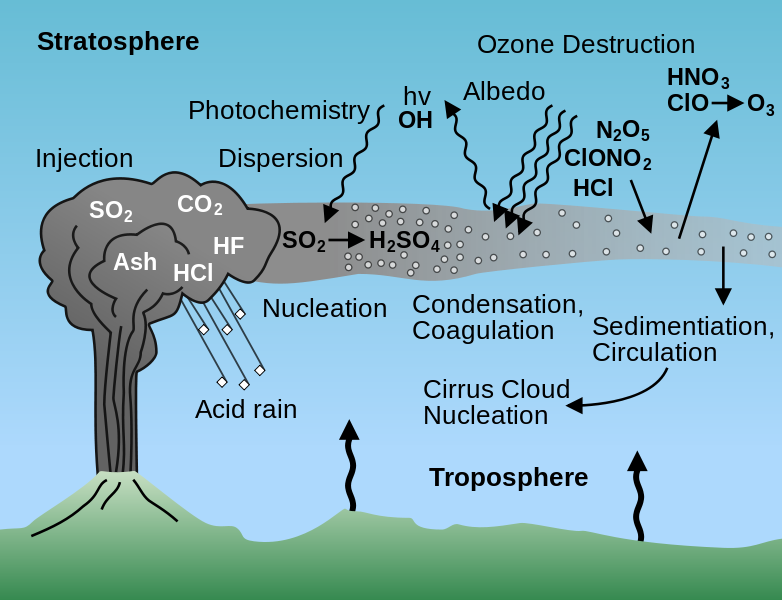
the internal view on how volcanoes work

the color cordnated volcano alert system

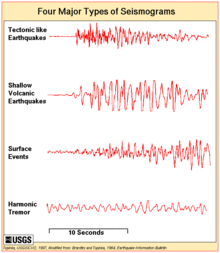
how to tell the difference between harmonic tremors and normal quakes on a webicorder .
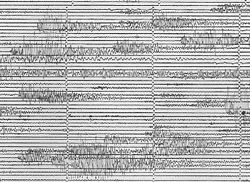
and last and never least a scale of volcano ash erupted compairison ..
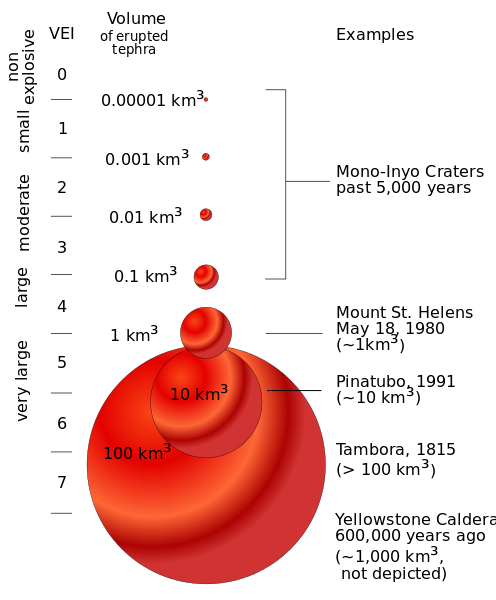
SO without much stress and slightly earlier then this years thread , here she is .. to continue learning and discovering volcano`S at their best and worst .. remember you probably found it here first before the major news networks . we watch and monitor 247 from around the world . enjoy it ..
www.abovetopsecret.com...(2013)
www.abovetopsecret.com...(2012)
www.abovetopsecret.com...(2011)
www.abovetopsecret.com...(2010)
en.wikipedia.org...
On Earth, volcanoes are generally found where tectonic plates are diverging or converging. A mid-oceanic ridge, for example the Mid-Atlantic Ridge, has examples of volcanoes caused by divergent tectonic plates pulling apart; the Pacific Ring of Fire has examples of volcanoes caused by convergent tectonic plates coming together. By contrast, volcanoes are not usually created where two tectonic plates slide past one another. Volcanoes can also form where there is stretching and thinning of the Earth's crust in the interiors of plates, e.g., in the East African Rift, the Wells Gray-Clearwater volcanic field and the Rio Grande Rift in North America. This type of volcanism falls under the umbrella of "Plate hypothesis" volcanism.[1] Volcanism away from plate boundaries has also been explained as mantle plumes. These so-called "hotspots", for example Hawaii, are postulated to arise from upwelling diapirs with magma from the core–mantle boundary, 3,000 km deep in the Earth.
Supervolcanoes Main article: Supervolcano See also: List of largest volcanic eruptions A supervolcano is a large volcano that usually has a large caldera and can potentially produce devastation on an enormous, sometimes continental, scale. Such eruptions would be able to cause severe cooling of global temperatures for many years afterwards because of the huge volumes of sulfur and ash erupted. They are the most dangerous type of volcano. Examples include Yellowstone Caldera in Yellowstone National Park and Valles Caldera in New Mexico (both western United States), Lake Taupo in New Zealand, Lake Toba in Sumatra, Indonesia and Ngorogoro Crater in Tanzania, Krakatoa near Java and Sumatra, Indonesia. Supervolcanoes are hard to identify centuries later, given the enormous areas they cover. Large igneous provinces are also considered supervolcanoes because of the vast amount of basalt lava erupted, but are non-explosive.
volcanoes.usgs.gov...
www.noaawatch.gov...
www.volcano.si.edu...
www.metoffice.gov.uk...
en.vedur.is...
yellowstones thumbnails to their webicorders
www.isthisthingon.org...
www.volcanodiscovery.com...
www.jma.go.jp...
www.gns.cri.nz...

the internal view on how volcanoes work

the color cordnated volcano alert system


how to tell the difference between harmonic tremors and normal quakes on a webicorder .

and last and never least a scale of volcano ash erupted compairison ..

edit on 18/12/13 by alysha.angel because: (no reason given)
reply to post by alysha.angel
So glad you opted to continue carrying the magmatic torch! I wanted to drop a few things in here that I ran across in my research regarding the possible connections between the electric universe and expanding earth theories. As this information pertains to volcanoes, I had not had a chance to integrate it within the research thread that SonoftheSun and I ware working on.
Here goes:
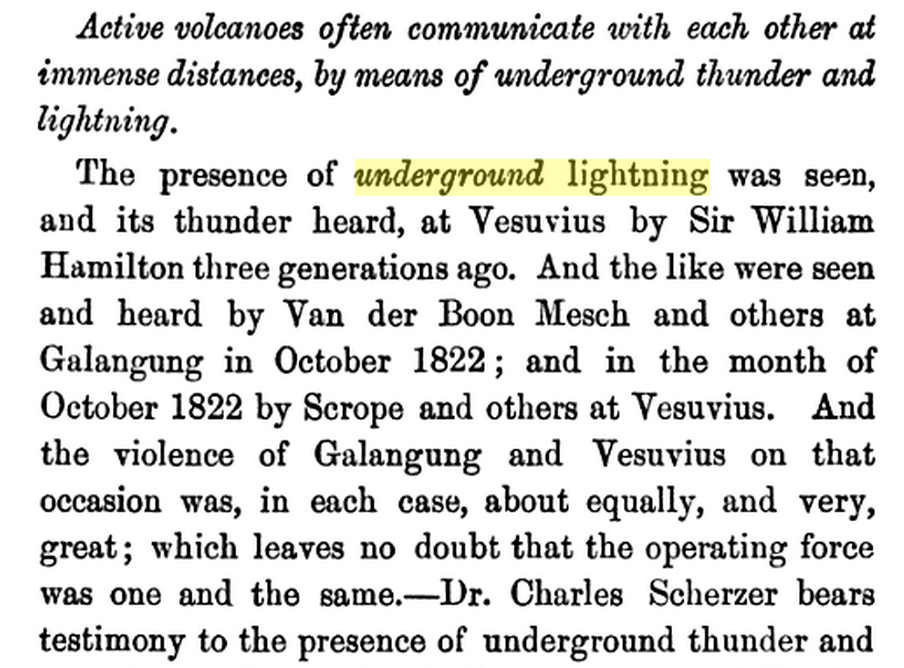
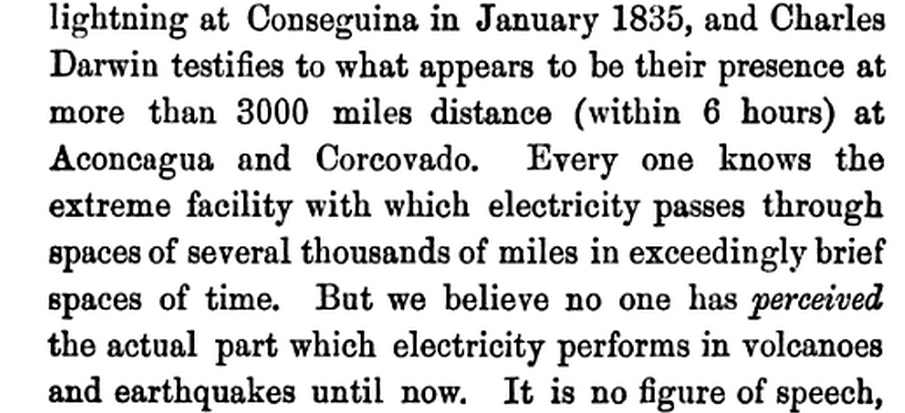
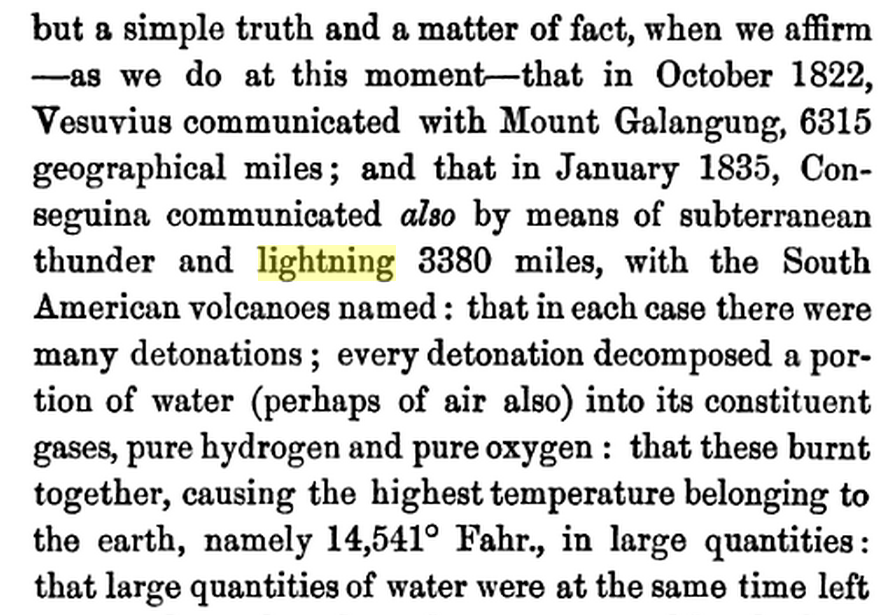
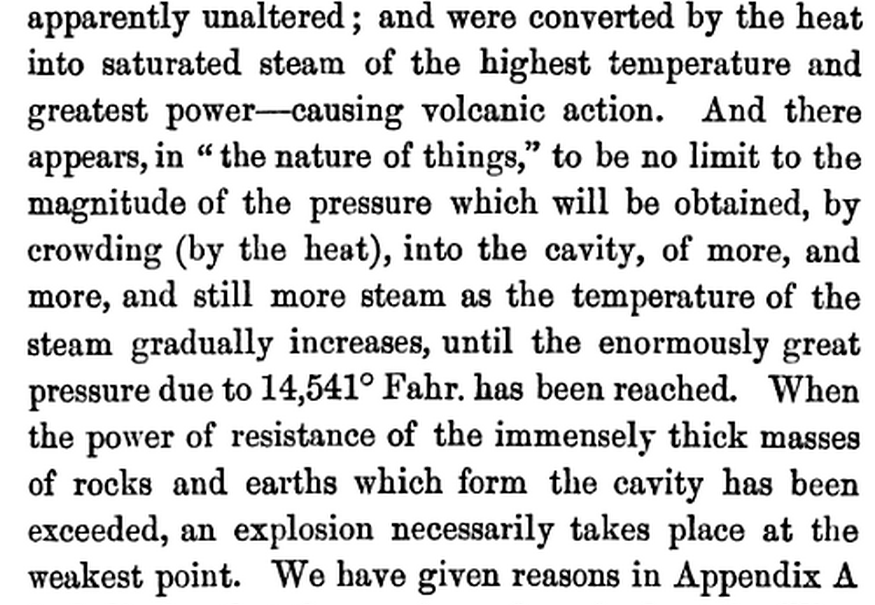

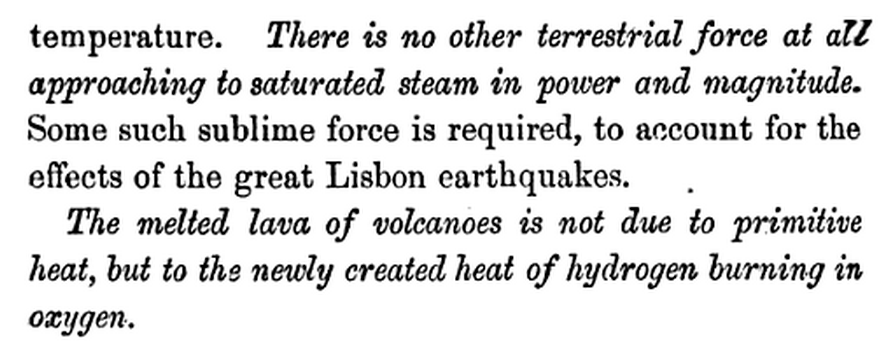
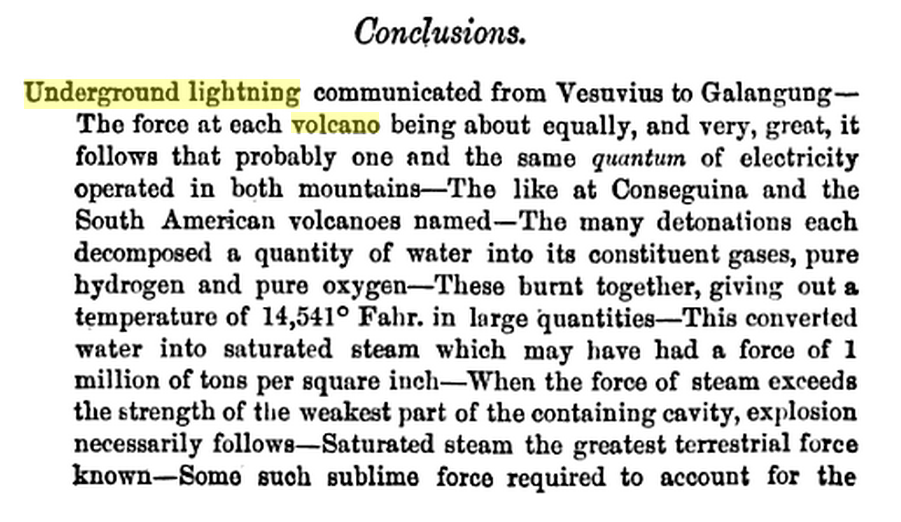
From and old book I found on google books titled: Saturated Steam The Motive Power in Volcanoes and Earthquakes; Great Importance of Electricity
So glad you opted to continue carrying the magmatic torch! I wanted to drop a few things in here that I ran across in my research regarding the possible connections between the electric universe and expanding earth theories. As this information pertains to volcanoes, I had not had a chance to integrate it within the research thread that SonoftheSun and I ware working on.
Here goes:







From and old book I found on google books titled: Saturated Steam The Motive Power in Volcanoes and Earthquakes; Great Importance of Electricity
reply to post by jadedANDcynical
interesting read you got there . i enjoyed it . and yeah, im glad i did next years thread as well .. i hope its good enough . lord knows its got plenty of links and a couple of new ones i googled in a hurry . lol enjoy it .. i dont post often but when i do i do try to make the posts worth a good read at least ..
interesting read you got there . i enjoyed it . and yeah, im glad i did next years thread as well .. i hope its good enough . lord knows its got plenty of links and a couple of new ones i googled in a hurry . lol enjoy it .. i dont post often but when i do i do try to make the posts worth a good read at least ..
Woopee, we can all stop worrying!
Psychics Predict 2014: A Gentler Year, More 'Perky,' and Maybe a Volcano Eruption
Only ONE volcanic eruption to worry about - the other 60 to 70 have decided they won't bother this year. It is such an effort to erupt and they probably want to direct their energies elsewhere.
BTW if you can't be bothered to find out which one by reading therubbish post it is :---
One has to wonder what noise North Korea will be making by being in the news.
Psychics Predict 2014: A Gentler Year, More 'Perky,' and Maybe a Volcano Eruption
Only ONE volcanic eruption to worry about - the other 60 to 70 have decided they won't bother this year. It is such an effort to erupt and they probably want to direct their energies elsewhere.
BTW if you can't be bothered to find out which one by reading the
Good, who does readings by phone or in person withappointments at her website, can get very specific. She thinks Iceland will be in the news this year (possibly with a big volcano eruption) as will North Korea (which will make a lot of noise but do no damage)
One has to wonder what noise North Korea will be making by being in the news.
PuterMan
Woopee, we can all stop worrying!
Psychics Predict 2014: A Gentler Year, More 'Perky,' and Maybe a Volcano Eruption
Only ONE volcanic eruption to worry about - the other 60 to 70 have decided they won't bother this year. It is such an effort to erupt and they probably want to direct their energies elsewhere.
BTW if you can't be bothered to find out which one by reading therubbishpost it is :---
Good, who does readings by phone or in person withappointments at her website, can get very specific. She thinks Iceland will be in the news this year (possibly with a big volcano eruption) as will North Korea (which will make a lot of noise but do no damage)
One has to wonder what noise North Korea will be making by being in the news.
What a load of crap, if i ever heard it .. and Iam psychic in many ways lol
i pray for your common sense to prevail and realize that shes full of it to the point that her eyes are brown .. and as for north korea and china their keeping that one hush hush and when she does blow . believe you me there will be damage . she wont blow small thats for sure ... i google whatever i can find on that one and so far iv found nothing but speculation . it was first between 2013 and 2014 or at the latest 2015 . sorry thats too vague for me to accept . as for the others no one can really predict when a volcano will blow unless its within a few weeks or months or in most cases DAYS before an eruption ... ( PM hope your not mad at me for doing the thread anyway .. lol) cheers .
Scientist Solves Mystery of
Green Lightning, Says It's Surprisingly Common
Go to the link for the explanation.
The origin of the bright green lightning bolts remained a mystery until atmospheric scientist Arthur Few, of Rice University in Houston, became curious about the phenomenon. "I thought, 'That's funny; why don't we see this in lightning storms?'" said Few at the meeting of the American Geophysical Union (AGU) in San Francisco on Monday.
Go to the link for the explanation.
Thanks for your hard work on last year's thread and best wishes on the new one Alysha!
May you be blessed with many thread followers who appreciate your efforts.
So it's now official? Woohoo!!!
Commented on the 2013 thread today about new activity at Mt. Etna for anyone joining here and may have missed it - It's really starting to light up the night sky and producing quite a flow.

Etna Webcams and Monitoring Data
May you be blessed with many thread followers who appreciate your efforts.
So it's now official? Woohoo!!!
Commented on the 2013 thread today about new activity at Mt. Etna for anyone joining here and may have missed it - It's really starting to light up the night sky and producing quite a flow.

Etna Webcams and Monitoring Data
edit on 29-12-2013 by sageturkey because: Add Pic
Chaparrastique
volcano in El Salvador erupts, prompts evacuations
Link has video and more images
The Chaparrastique volcano in El Salvador erupted Sunday, shooting gas and ash about 3 miles into the air.
"We have implemented emergency measures to evacuate villages located within 3 kilometers of the volcano," Civil Defense Director Jorge Melendez said.
About 5,000 people live in the area, according to civil protection officials. So far, no one has been reported hurt.
The 7,025-foot volcano is located about 30 miles from the city of San Miguel and about 90 miles east of the capital San Salvador. Its last major eruption occurred in 1976.
Link has video and more images
update to post by PuterMan
The whole of the report is included because it is in Spanish. This is a Google Translation for us English speakers.
www.snet.gob.sv...
Seems it has quietened down a litttle and seismicity has reduced.
The whole of the report is included because it is in Spanish. This is a Google Translation for us English speakers.
Special Report No. 3
Evolution from eruption of volcano Chaparrastique, San Miguel
Date and time of issue: 2013-12-30 8:00:00
The Ministry of Environment and Natural Resources reports on the evolution of the eruption of the volcano Chaparrastique San Miguel, located to the east of the country.
This eruption began at 10:30 am Sunday, consisting of an eruption column of gas and ash, which rose approximately 5 to 10 km, ending the most intense part at 1:00 pm the same day. Later the intense phase of the eruption, the measurement of the internal vibration of the volcano decreased significantly.
During the eruption measuring the internal vibration of the volcano recorded in station Lacayo fluctuated between 521 and 223 units in average time. From 3:00 pm yesterday (December 29) until 7:00 am this day, the internal vibration of the volcano recorded in the seismic station Lacayo fluctuated between 27 and 17 points in their average time.
At the time of issuing this report, the level of vibration of the volcano has been reduced, but the images captured by the webcam located on Cerro El Pacayal show moderate output gases and vapors.
According to the latest forecast ash transport, provided by the National Oceanic and Atmospheric Administration (NOAA English), it is estimated that to this day, the ash cloud would have completely dissipated in the country.
For safety, the surrounding population is advised to take precautionary measures like: autoevacuar not approach the area and meet the guidelines issued by the Directorate General of Civil Protection.
For more information contact:
Communications Management
Phones: (503) 2132 9524, (503) 2132 9525, (503) 2132 6281, (503) 2132 9609, (503) 2132 9610
Fax (503) 2132 9523 , 2132 9429
[email protected]
www.marn.gob.sv www.snet.gob.sv
www.snet.gob.sv...
Seems it has quietened down a litttle and seismicity has reduced.
edit on 30/12/2013 by PuterMan because: (no reason given)
Appreciate all the hard work that goes into a thread like this; I am an avid follower!
Happy New Year!
Miss Nugget
Happy New Year!
Miss Nugget
Source: Wall Street Journal
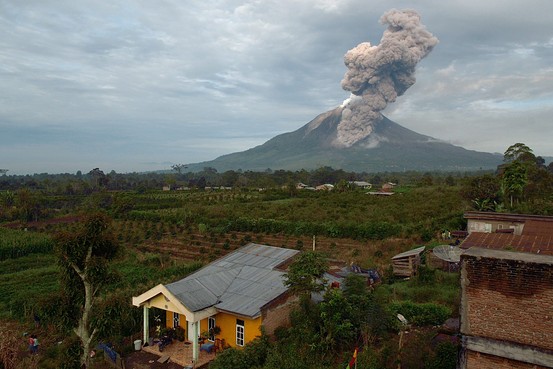
Mount Sinabung erupts on Tuesday. ©Agence France-Presse/Getty Images
The interesting thing about the photo is that it appears to show a big pyroclastic flow down the side of the mountain.
Source: Solar News

Mount Sinabung erupts on Tuesday. ©Agence France-Presse/Getty Images
On Monday afternoon, Mount Sinabung released the first of several lava flows, which continued on Tuesday. Meanwhile, its lava dome suffered dozens of avalanches, according to the National Agency for Disaster Management. The lava reached more than two kilometers (1.2 miles) down the mountain.
Eruptions of ash and gas clouds accompanied the release of lava, while several tremors shook the area, one of which lasted nearly five minutes.
"I think it's almost at the end of its activity," said Surono, ...... "The lava dome began forming in early November, and now it's collapsed many times."
The interesting thing about the photo is that it appears to show a big pyroclastic flow down the side of the mountain.
"This morning from 6 a.m. until 8:24 a.m., the volcano erupted six times, the hot cloud travelled a distance of 2.5 kilometers and was 2.5 kilometers high, so this morning was pretty intensive," said Supriyati Andreastuti.
The government's alert status remained at its highest level, after violent eruptions in recent months from the volcano that lay dormant for four centuries.
The National Disaster Management Agency said more than 19,000 people, evacuated over the last few months, are staying in 31 temporary shelters provided by the government.
Vulcanologist Gede Suandika said the huge volcanic ash cloud was formed by a collapse of the lava dome on Monday (December 30).
"So the collapse of the lava dome that formed in the southeast fell down and caused hot clouds that travelled more than two kilometres. This observation was made using a thermal camera during the night," he said.
Source: Solar News
edit on 31/12/2013 by PuterMan because: to add more information
The volcanoes we should be watching are the ones under water, like the one that's been dumping snow on the US east coast for most of December. I've
been hesitant to even bring this up, but my mother and her boyfriend were quite encouraging when the topic happened to come up while watching the
weather report last night. I'm not here to make predictions and I've drawn no conclusions other than the blatantly obvious: undersea volcanoes have
an effect on the weather.
The following images were created with GIMP using images from AccuWeather and the USGS:






And these rather startling gifs, directly from weather.unisys.com...:


The following images were created with GIMP using images from AccuWeather and the USGS:






And these rather startling gifs, directly from weather.unisys.com...:


Happy New Year everyone!
Video: Slow quakes in the Nankai Trough
Stay safe and aware
ETA
Posted this in the wrong place...
Video: Slow quakes in the Nankai Trough
Stay safe and aware
ETA
Posted this in the wrong place...
edit on 2-1-2014 by berkeleygal because: (no reason given)
reply to post by CretumOrbis
I've been thinking the same exact thing but have nothing to back the hunch. For 2-3 months now I sense something volcanic is going to come from the sea, which hasn't been identified yet/not established in system. Likely not possible or at least probable but I'm sharing it anyway.
If this happens at least it won't be in a populated area. If it's a super volcano I'm sure they will detect gasses in the area before it blows (or massive animal die offs, etc). I'm not trying to make a prediction just for the record (don't have that gift). It's just interesting to see others thinking this same thing.
I've been thinking the same exact thing but have nothing to back the hunch. For 2-3 months now I sense something volcanic is going to come from the sea, which hasn't been identified yet/not established in system. Likely not possible or at least probable but I'm sharing it anyway.
If this happens at least it won't be in a populated area. If it's a super volcano I'm sure they will detect gasses in the area before it blows (or massive animal die offs, etc). I'm not trying to make a prediction just for the record (don't have that gift). It's just interesting to see others thinking this same thing.
reply to post by Dianec
I've had a passion for weather since I was a little kid, living in Florida and tracking hurricanes for fun. (and safety, obviously) Not many hurricanes around the Great Lakes area to worry about, but I still enjoy tracking them. So when I noticed this pattern over the summer it was an epic face-palm moment, as I've literally been staring at it for my whole life. Since then I've been cross referencing infrared and visual satellite images with earthquakes and fault lines. I didn't start making these images until about a month ago when I became completely convinced of the correlation. I was going to wait until I had more work done and could make a proper presentation but the conversation on NYE changed my mind. The more eyes, the better.
Anyways, here's a couple new gifs I made today. First off, one or more volcanoes feeding Tropical Storm Bejisa, south of Madagascar. (head's up, Australia...)

Storm intensifies over fault lines, following a 6.6 magnitude earthquake near Vanuatu yesterday:

I've been thinking the same exact thing but have nothing to back the hunch. For 2-3 months now I sense something volcanic is going to come from the sea, which hasn't been identified yet/not established in system. Likely not possible or at least probable but I'm sharing it anyway. If this happens at least it won't be in a populated area. If it's a super volcano I'm sure they will detect gasses in the area before it blows (or massive animal die offs, etc). I'm not trying to make a prediction just for the record (don't have that gift). It's just interesting to see others thinking this same thing.
I've had a passion for weather since I was a little kid, living in Florida and tracking hurricanes for fun. (and safety, obviously) Not many hurricanes around the Great Lakes area to worry about, but I still enjoy tracking them. So when I noticed this pattern over the summer it was an epic face-palm moment, as I've literally been staring at it for my whole life. Since then I've been cross referencing infrared and visual satellite images with earthquakes and fault lines. I didn't start making these images until about a month ago when I became completely convinced of the correlation. I was going to wait until I had more work done and could make a proper presentation but the conversation on NYE changed my mind. The more eyes, the better.
Anyways, here's a couple new gifs I made today. First off, one or more volcanoes feeding Tropical Storm Bejisa, south of Madagascar. (head's up, Australia...)

Storm intensifies over fault lines, following a 6.6 magnitude earthquake near Vanuatu yesterday:

reply to post by PuterMan
I have an ominous feeling about Sinabung, Puterman. I don't think the 5 km suggested evacuation zone is far enough away.
According the Jakarta Globe , over 20,000 people are now in shelters., and the authorities are considering expanding the evacuation area. I sure hope they do & make it mandatory. It's a bummer for those forced to go, but the volcano is so active it seems the only prudent choice.
I have an ominous feeling about Sinabung, Puterman. I don't think the 5 km suggested evacuation zone is far enough away.
According the Jakarta Globe , over 20,000 people are now in shelters., and the authorities are considering expanding the evacuation area. I sure hope they do & make it mandatory. It's a bummer for those forced to go, but the volcano is so active it seems the only prudent choice.
edit on 1/4/2014 by Olivine because: (no
reason given)
edit on 1/4/2014 by Olivine because: wording redo
reply to post by Olivine
now 7 km... great panic after moore than 50 eruptions saterday...this morning an moore violent eruption has occurd...
www.nu.nl...
now 7 km... great panic after moore than 50 eruptions saterday...this morning an moore violent eruption has occurd...
www.nu.nl...
reply to post by Olivine
Yup I would agree. Sinabung looks like it is set to do a very big eruption.
The weird thing is that the number of eruption volcanoes over an above the 17 always erupting falls again this week.
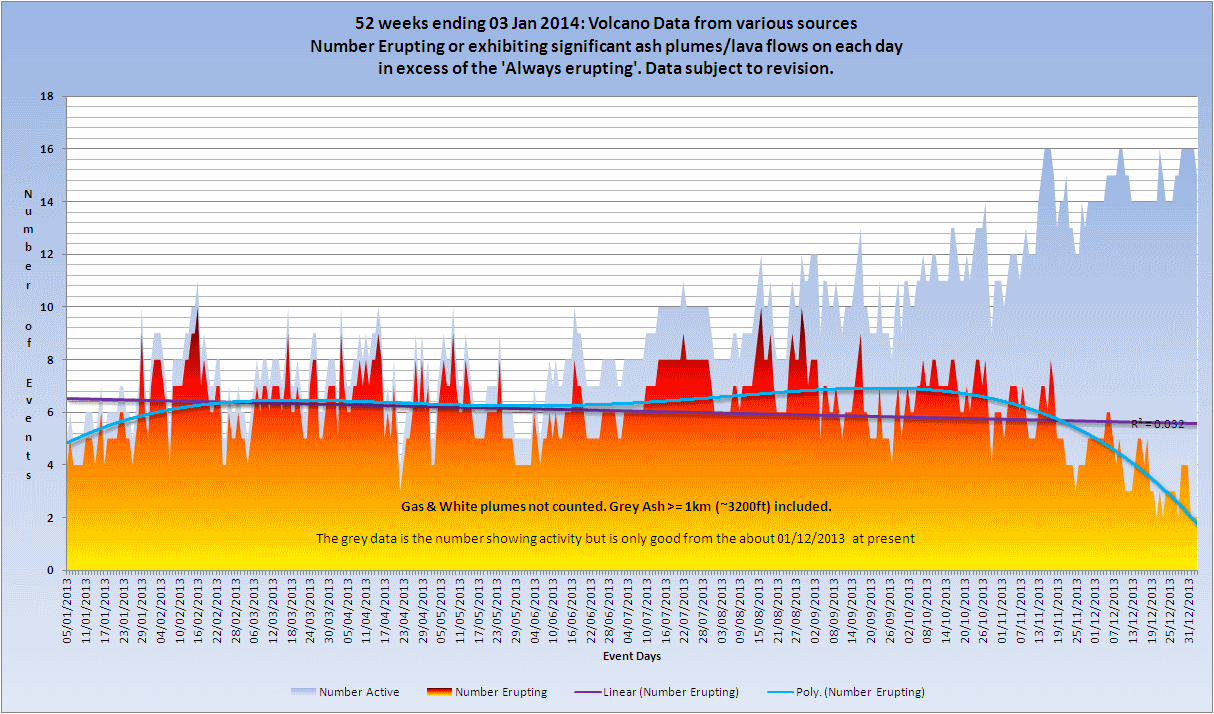
Click the image to enlarge
I am going backwards through reports to try and create the grey activity areas of the chart, thus currently only goof from about December last year - all take time and way too much to do. I need about 5 of me.
I think this volcanic lull is unprecedented, but maybe not. I certainly have not seen such a drop in activity in the last few years.
Yup I would agree. Sinabung looks like it is set to do a very big eruption.
The weird thing is that the number of eruption volcanoes over an above the 17 always erupting falls again this week.

Click the image to enlarge
I am going backwards through reports to try and create the grey activity areas of the chart, thus currently only goof from about December last year - all take time and way too much to do. I need about 5 of me.
I think this volcanic lull is unprecedented, but maybe not. I certainly have not seen such a drop in activity in the last few years.
edit on 5/1/2014 by PuterMan because: (no reason given)
reply to post by Dianec
Does Nishino-shima (Japan) not count. The two islands, now joined into one definitely came from the sea.
For 2-3 months now I sense something volcanic is going to come from the sea, which hasn't been identified yet
Does Nishino-shima (Japan) not count. The two islands, now joined into one definitely came from the sea.
reply to post by CretumOrbis
I have to say that in my opinion this is mainly due to the current positioning of the jet stream, which is affected by the sun more than anything. Which volcano is it that you consider has been having this effect?
Problem is that whilst you may consider it blatantly obvious it may not be so to many who read the thread. Not casting aspersions on your theory, just saying that if you are going to make a statement such as that then you should be prepared to qualify it.
I would imaging this would be from temperature effects affecting decadal oscillations perhaps? Maybe you could expand your arguments to explain your conclusions.
Whilst in my opinion weather does affect earthquakes out at sea due to the pressure differences caused by the depression or elevation of large masses of water, and this is something that I have documented on ATS before, it is perhaps not a widely held belief. Could it be that pressure from weather systems affects volcanoes? Just a thought.
The volcanoes we should be watching are the ones under water, like the one that's been dumping snow on the US east coast for most of December.
I have to say that in my opinion this is mainly due to the current positioning of the jet stream, which is affected by the sun more than anything. Which volcano is it that you consider has been having this effect?
I've been hesitant to even bring this up, but my mother and her boyfriend were quite encouraging when the topic happened to come up while watching the weather report last night. I'm not here to make predictions and I've drawn no conclusions other than the blatantly obvious: undersea volcanoes have an effect on the weather.
Problem is that whilst you may consider it blatantly obvious it may not be so to many who read the thread. Not casting aspersions on your theory, just saying that if you are going to make a statement such as that then you should be prepared to qualify it.
I would imaging this would be from temperature effects affecting decadal oscillations perhaps? Maybe you could expand your arguments to explain your conclusions.
Whilst in my opinion weather does affect earthquakes out at sea due to the pressure differences caused by the depression or elevation of large masses of water, and this is something that I have documented on ATS before, it is perhaps not a widely held belief. Could it be that pressure from weather systems affects volcanoes? Just a thought.
new topics
-
Shane Gillis commercial
Jokes, Puns, & Pranks: 1 hours ago -
Elon Says It’s ‘Likely’ He Buys Tanking MSNBC
Political Ideology: 3 hours ago -
Montelukast affects brain, caused 5 year old to attempt suicide
Medical Issues & Conspiracies: 4 hours ago -
Jaguar Rebrand Video Causes "WTF?" Moment - Seriously Weird
Automotive Discussion: 6 hours ago -
Let's start a conspiracy
General Conspiracies: 7 hours ago -
What Joe Rogan said Vs The View
Dissecting Disinformation: 10 hours ago -
Biden's "Reckless" Decision To Escalate Russia-Ukraine War
World War Three: 11 hours ago
top topics
-
Biden's "Reckless" Decision To Escalate Russia-Ukraine War
World War Three: 11 hours ago, 16 flags -
Elon Says It’s ‘Likely’ He Buys Tanking MSNBC
Political Ideology: 3 hours ago, 14 flags -
Jaguar Rebrand Video Causes "WTF?" Moment - Seriously Weird
Automotive Discussion: 6 hours ago, 13 flags -
What Joe Rogan said Vs The View
Dissecting Disinformation: 10 hours ago, 11 flags -
Montelukast affects brain, caused 5 year old to attempt suicide
Medical Issues & Conspiracies: 4 hours ago, 10 flags -
Shane Gillis commercial
Jokes, Puns, & Pranks: 1 hours ago, 2 flags -
Let's start a conspiracy
General Conspiracies: 7 hours ago, 1 flags
active topics
-
Well we know Putins ICBMs won't fail in their silos
World War Three • 170 • : NoCorruptionAllowed -
Jaguar Rebrand Video Causes "WTF?" Moment - Seriously Weird
Automotive Discussion • 15 • : Edumakated -
-@TH3WH17ERABB17- -Q- ---TIME TO SHOW THE WORLD--- -Part- --44--
Dissecting Disinformation • 3348 • : Crazierfox -
Elon Says It’s ‘Likely’ He Buys Tanking MSNBC
Political Ideology • 59 • : KrustyKrab -
Biden's "Reckless" Decision To Escalate Russia-Ukraine War
World War Three • 119 • : KrustyKrab -
Inca stone masonry at Sacsayhuaman, Ollantaytambo and the Sun Temple
Ancient & Lost Civilizations • 8 • : Hansllune -
Montelukast affects brain, caused 5 year old to attempt suicide
Medical Issues & Conspiracies • 5 • : marg6043 -
Well, here we go red lines crossed Biden gives the go ahead to use long range missiles
World War Three • 325 • : Oldcarpy2 -
A Mysterious Orb filmed over NYC by local news
Aliens and UFOs • 24 • : Lazy88 -
Shane Gillis commercial
Jokes, Puns, & Pranks • 0 • : theatreboy
